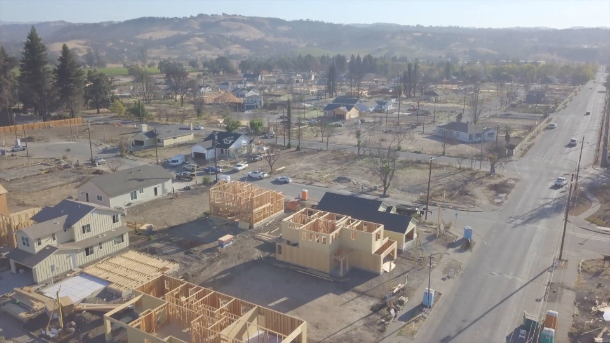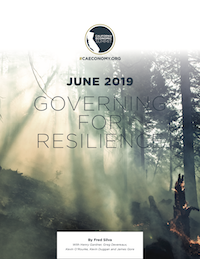
(Photo: Angel Cardenas/CA Fwd)
As California communities seek to grow and thrive, they face dramatic new disruptions: a range of increasingly frequent natural disasters associated with climate change, and the social and economic dislocations caused by rising costs and changes in the workplace. To achieve lasting prosperity, California must build more sustainable, more resilient communities that can withstand these emerging challenges.
In a new report, CA Fwd and the California Economic Summit captured some of the ambitious efforts undertaken after the North Bay fires and offers key recommendations for improving resiliency and setting a new standard for recovery.
“Governing for Resilience“ summarizes this new approach and reinforces the imperative of government agencies to work closer together and with their civic and business leaders to break through self-imposed limitations and improve the prosperity, equity and sustainability of their communities.
While economic disruptions can be difficult to anticipate, natural disasters have known causes and predictable consequences—providing communities with tangible circumstances to guide efforts to prevent damage, respond effectively and recover quickly. In the year after wildfires devastated the North Bay, California Forward and its Summit partners worked with local governments and civic groups to assess the region’s recovery—and to capture lessons learned in Sonoma, Napa, and other counties to inform state level discussions for building more resilient, economically robust communities.
The North Bay’s response to the fires, in particular, produced a thoughtful proposal for rebuilding fire-impacted neighborhoods and promoting environmentally sustainable development. That proposal informed conversations at the 2018 California Economic Summit about how to govern for greater resiliency, as well as legislation introduced in 2019.
 Having cooperated deeply in the throes of the firestorm, the city of Santa Rosa and Sonoma County developed a formal intergovernmental relationship with a Joint Powers Authority to support the rebuilding effort. The partnership is intended to coordinate a wide range of policy levers—including new local infrastructure investments paired with additional state resources—to build 30,000 homes over 10 years. The goal, as expressed in an April 2019 joint statement from the city and county is to put “equity, affordability, and climate resiliency in the center of our housing and economic development.”
Having cooperated deeply in the throes of the firestorm, the city of Santa Rosa and Sonoma County developed a formal intergovernmental relationship with a Joint Powers Authority to support the rebuilding effort. The partnership is intended to coordinate a wide range of policy levers—including new local infrastructure investments paired with additional state resources—to build 30,000 homes over 10 years. The goal, as expressed in an April 2019 joint statement from the city and county is to put “equity, affordability, and climate resiliency in the center of our housing and economic development.”
This paper takes a broader look at the Sonoma experience to consider options for public, private and civic-sector leaders throughout the state who seek to build more collaborative relationships important to the everyday efforts of growing equitable and sustainable communities—and essential to increasing resiliency to large-scale disruptions.
Read the full report here.

